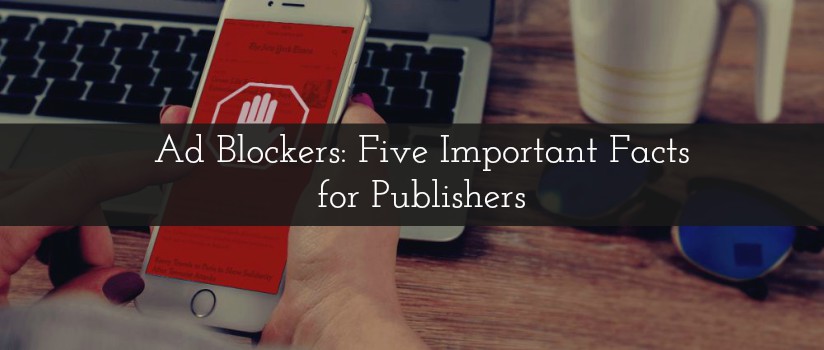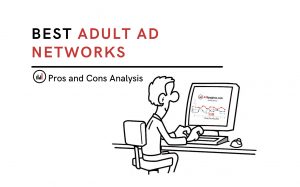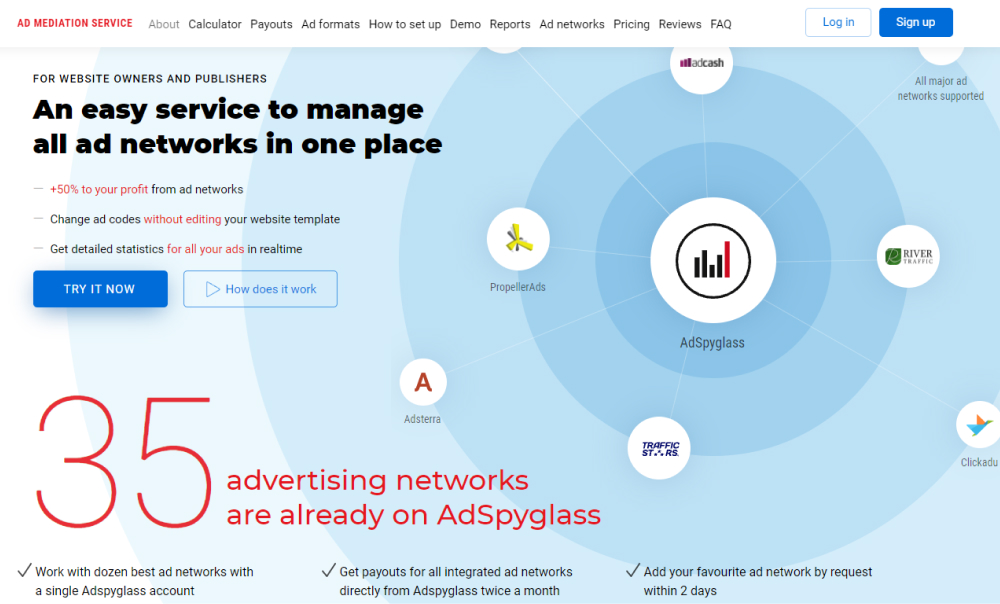For a glimpse at how fast an online trend can spread, look no further than ad blocking. PageFair says that 11% of the connected global population use ad blockers to prevent certain types of inventory from showing on their screens, but that figure could rise even further if studies are to be believed.
Of course, publishers are hampered by the revenue lost from ads that don’t appear, which makes it all the more important for them to take note of new developments within ad blocking and to act accordingly.
As ad blocking readies itself for more growth around the world, here is a selection of five points that website owners should bear in mind.
1. This is just the start
Ad blocking is a fast-emerging practice and anyone who’s worked within online advertising will have heard about the rates of adoption. What few realise is the pace at which the practice is gaining momentum, which means that future growth is virtually guaranteed.
PageFair’s annual assessment of ad blocking is widely considered as a key barometer for gauging the practice’s growth. The latest findings show:
- The usage of ad blockers grew by 30% in 2016. A total of 615 million devices now have one installed.
- Ad-blocker usage on mobile grew nearly one third last year. A total of 380 million active devices have an ad blocker, up 108 million from the year before.
- Once a trend for younger browsers, ad blocking is now popular among all age categories.
- Some markets are still catching up – adoption grew in Asia-Pacific by 40% last year.
If there’s anything to be gleaned from the above it’s that ad blocking is not slowing down, and why should it?
When people were first given access to a TV remote that allowed them to switch between channels and avoid being stuck with ads, they snapped them up. Ad blockers are a progressive technology and while they remain in operation – saving people data, battery and cleaning up their browsing experiences – there is little reason for people to stop using them.
2. Ad blockers are big business
The developers of ad-blocking software may like to consider themselves as disruptors but they’re far from void of criticism in some departments.
Since arriving on the scene, many ad blockers have taken to diversifying their businesses to make the most of their growing user bases, sometimes to rather ironic effect.
Take the example of AdBlock Plus, the most popular ad-blocking tool in Europe, which claims to have its own ‘guidelines’ for the type of ads it blocks. These are dictated by a whitelist which groups like Google, AOL and Yahoo have paid to be on, allowing their ads to bypass the blocking system at every opportunity.
Not content with installing a virtual protection racket, things took an even stranger turn when AdBlock Plus announced plans for its first ‘ad marketplace’ – essentially an ad server which publishers could use to select pre-approved ads for their sites.
Rival tools like 1Blocker monetise themselves via the more simplified method of blocking a certain amount of inventory on their free platform and enforcing more stringent ad-blocking rules for those with a paid-up account. Ghostery on the other hand generates money by selling data on tracking software to various parties.
What’s clear is that ad blockers are now finding ways to make ends meet which invariably keeps their tools free to download.
Read also: Native Ads | Everything you wanted to know as a website owner
3. They are a response
Publishers that have lost out to the ad-blocking craze may be forgiven for demonising the tools which have cut into their revenue. The opinion that ad blockers are bad for the internet ignores entirely the end user’s thought on the matter as well as what they get out of their install.
For one, if fewer ads are being displayed then less battery and data is being used, which is why it’s no surprise to see installs growing on mobile. That’s not all, however, as various members of the ad industry should be looking at whether they did enough to thwart the threat before it was allowed to grow.
In a survey from the IAB last year, the top reasons for blocking ads were for better navigation around sites and improved page-loading speeds, while ads that block content and lengthy pre-roll video spots were among some of the most annoying formats.
Companies like eyeo – developer of AdBlock Plus – have said their tools are made in response to the sluggish, invasive ads that have been accepted for far too long and this may be true. It’s been said that advertisers and publishers have largely ignored the issues posed by certain types of inventory, which eventually required a response.
That said, in the same survey from the IAB, two-thirds of users were open to stopping the blocking of ads on the assurance of better safety, less disruption and better control of what they see and don’t see online. Ad blockers will likely grow in usage yet again this year, but it’s never too late for a solution. That brings us onto our next point…
Read also 10 Best Pop-Under Ad Networks 2017
4. Ad blockers are defeatable
Publishers can find ways of circumventing ad blockers and there are many ways of tapping into the two-thirds that would deactivate their tool for a number of reasons.
Clues as to the necessary action are provided by further research from the IAB, which shows ad-blocking users favouring sites with fewer interruptions and streamlined experiences. In addition to this, the users were less fearful than non-ad blockers over web security.
As the table suggests, considering about how ads fit in with the content they accompany might help, as well as weeding out ads that contain malware and viruses.
In valuable research from PageFair into the sorts of things that would start people using ad blockers, the group outlined better ad targeting and a fairer use of data to be among the top demands going forward.
Still, aside from revising how they use their visitors’ data, publishers do have the option of applying measures which could help them in the short term. Some of their counterparts have gone on the offensive in their wars against ad blockers by locking out some of their content to those that use the tools. Last year saw The New York Times hand its ad-blocking readers the ultimatum of removing their blockers or buying a subscription to continue reading the newspaper’s editorial.
Many large media groups have taken a similar approach, with Forbes reporting that 42% of its users disabled their tools once prompted. This equated to 15-million ad impressions, which shows just how important it is for publishers to come up with a response.
For any publisher attempting similar, credence should be paid to the ways in which these sites have appealed to their audiences by directly stressing the impact of ad blockers and what it means for their future. These actions should also form part of a temporary measure; applied on a backdrop of improvements to the ways in which ads are serving their users with a view to the long term.
5. Easy fixes are optional
As for that response, there are certain ways of combatting ad blockers that won’t take months to implement.
Here are some of the most popular:
- Charging for use: If money from subscriptions can help offset the losses from the use of ad blockers then what’s to stop websites from asking for donations? This could be in return for an exclusive content or even an ad-free experience. Putting everything behind a paywall is an option for large-scale monetisation, but should those that view ads be forced to pay up?
- Monetise through other means: For sites that rely heavily on the types of ads that often get blocked, there’s always the chance to generate revenue in other ways. Affiliate links – integrated within an article’s body text – are one way of bypassing the blockers, along with more user-friendly formats like sponsored posts and native advertising.
- Awareness missions: Short-term awareness missions are an effective way of helping people understand the consequences of ad blocking. The Financial Times did this by blanking a percentage of words in its articles to reflect the percentage of revenue lost by ad blocking. This should be supplemented by a request for donations if possible.
- Front the cost: The last resort is to get in contact with groups like AdBlock Plus and if the money lost is greater than the money required to be whitelisted, it should remain an option to consider.
Current forecasts show that ad blocking will sipher tens of billions of dollars from publishers for every year that its usage stays the same. With the losses set to climb even higher in the years to come, those that are affected should be preparing their own response to the growing phenomenon.
There are advantages and disadvantages to every ad network. Thanks to ad mediation services like AdSpyglass, publishers can link themselves up to all of the platforms above and reap the benefits that each can offer.
Our process is simple:
- AdSpyglass automatically selects the most profitable offers from top ad networks and displays ads with the highest CPM on your websites.
- AdSpyglass gives our publishers complete transparency over the data we collect
- We automatically switch your ad tags to the most profitable offers
These create three huge advantages for our users:
- An income boost of up to 100% automatically.
- There is no need to change ad tags to reply on your websites templates. You manage all your ads such as network ads or your own ads directly via AdSpyglass admin panel. It helps to avoid mistakes while you add your website templates and saves your time, even more so if you have numerous sites.
- You can see detailed statistics from all inventory ad networks in AdSpyglass reports allowing for granular analysis and the optimizing of campaigns from all your networks in one admin panel.
Read also SEO for Adult Sites — How to Drive Organic Traffic
Read also What is Header Bidding and How Does It Work?
And compare all ad networks CPM rates by countries here: Top Ad Networks 2017.










Comments
Tithik
23.07.2017 - 22:14
Thanks for sharing such an informative article. I was thinking how ad-blockers can affect earning of a publisher. After reading this article it is now clear to me.
maria.adspyglass
27.07.2017 - 15:26
Thanks for your feedback! We are happy to hear it 🙂